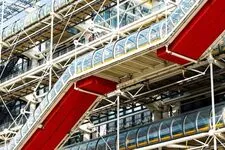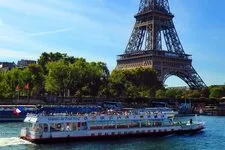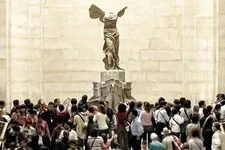City Hall of Paris

With the rue de Rivoli to the north, and the Seine to the south, the Hotel de Ville is one of the major attractions in Paris’ 4th Arrondissement. Having withstood various precarious moments during the centuries gone by, the Hotel de Ville was often the rallying point of rioters, protestors and revolutionaries. From Etienne Marcel, the Fronde and the Revolution, to the uprisings of July 1830 and February 1848, to the Commune and the Liberation of Paris, the Hotel de Ville is brimming with history.
A major political location
Since 1357, when Etienne Marcel gained ownership of what was then called the “Maison aux Piliers” (the house of pillars), the Hotel de Ville in Paris has played host to the biggest institutions in France’s capital. From 1789 to 1794, the building housed the Committee of Public Safety and became among one of the French Revolution’s strategic set-ups. It was also from the here that France’s history’s huge numbers rose up against the government and the law.
During the summer of the Trois Glorieuses (the French Revolution of 1830), the municipal commission led by the Marquis de La Fayette took over its quarters of the Hotel de Ville. In 1848, almost twenty years later, Lamartine then declared the country a Republic from this very same building. It was again inside the walls of the Hotel de Ville that the Central Committee sat during the 1871 revolutionary Commune period. The revolt against the then recently elected government under universal suffrage, was in reaction to the defeat of France in the 1870 Franco-Prussian war, as well as to the capitulation of Paris. However, forced to retreat by the offensive from the army of Versailles, the communards abandoned the Hotel de Ville before having it burnt down on 24th May, 1871. The palace was completely destroyed, as were its archives and its library.
Reconstruction of the Hotel de Ville after the Commune
By August 1871, the new municipal council had agreed to rebuild the Hotel de Ville in the same location. After lengthy debates between those who desired a simple restoration of the building to those who wanted a total reconstruction, it was decided that the new palace would be approved and that it should be built on the foundations of the old. It was finally rebuilt between 1874 and 1882 based on the plans of architects Théodore Ballu and Edouard Deperthes. The neo-Renaissance facade of the new Hotel de Ville was mainly inspired by that of the old one. Although the official opening of the new building was undertaken on July 13, 1882, the artistic decoration of the many internal ceremonial rooms was only finished in 1906. The great diversity of the artists who participated in the interior décor of the building brought an original and harmonious artistic combination. The main façade was adorned with figures of the greatest names of the city of Paris including artists, scientists, politicians and industrialists; all of whom contributed significantly to the history of the capital. The central pediment was decorated with a clock on which the figures of Labor and Instruction and those of the rivers Seine and Marne were placed, all of which related to the City of Paris.
A building of many functions
During the Second Empire, the Hotel de Ville, which became the administrative centre of the city, hosted memorable occasions such as the arrival of British Queen Victoria. After its reconstruction, the building became the venue for the grandest and most official of Paris celebrations. A place associated with power and prestige, where the Paris council sits and where guests of the mayor are welcomed, the Hôtel de Ville today is the largest municipal building in Europe.
Nearby activities

Centre Pompidou - Beaubourg

Vedettes du Pont Neuf

Louvre Visit with audioguide
